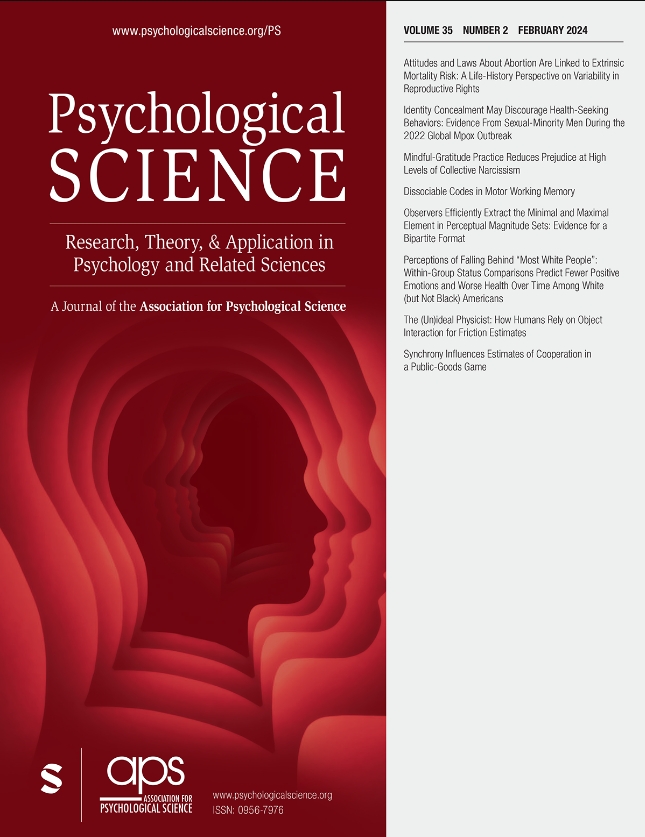神经节律与心律之间的振荡耦合
IF 4.8
1区 心理学
Q1 PSYCHOLOGY, MULTIDISCIPLINARY
引用次数: 0
摘要
振荡在组织生物系统方面发挥着至关重要的作用。在大脑中,振荡耦合是一种基本的交流机制。神经振荡与较慢的生理节律(如心率、呼吸)直接相互作用的可能性在很大程度上尚未被探索,而这种可能性可能会对心理功能产生重要影响。作为心率变异性(HRV)的一个方面,心率的振荡与心理健康有着显著的联系。Mather 和 Thayer 提出,高频心率变异(HF-HRV)和神经振荡之间的耦合是部分解释这种关系的机制。我们通过测量 37 名健康成年人在静息状态下的高频心率变异和神经振荡之间的相位-振幅耦合来验证这一假设。在所有频段都检测到了稳健的耦合。格兰杰因果关系分析表明,在除伽马外的所有频段中,心对脑的影响均强于脑对心的影响。这些发现表明,心律在调节神经振荡中起着因果作用,这可能对心理健康有重要影响。本文章由计算机程序翻译,如有差异,请以英文原文为准。
Oscillatory Coupling Between Neural and Cardiac Rhythms
Oscillations serve a critical role in organizing biological systems. In the brain, oscillatory coupling is a fundamental mechanism of communication. The possibility that neural oscillations interact directly with slower physiological rhythms (e.g., heart rate, respiration) is largely unexplored and may have important implications for psychological functioning. Oscillations in heart rate, an aspect of heart rate variability (HRV), show remarkably robust associations with psychological health. Mather and Thayer proposed coupling between high-frequency HRV (HF-HRV) and neural oscillations as a mechanism that partially accounts for such relationships. We tested this hypothesis by measuring phase-amplitude coupling between HF-HRV and neural oscillations in 37 healthy adults at rest. Robust coupling was detected in all frequency bands. Granger causality analyses indicated stronger heart-to-brain than brain-to-heart effects in all frequency bands except gamma. These findings suggest that cardiac rhythms play a causal role in modulating neural oscillations, which may have important implications for mental health.
求助全文
通过发布文献求助,成功后即可免费获取论文全文。
去求助
来源期刊

Psychological Science
PSYCHOLOGY, MULTIDISCIPLINARY-
CiteScore
13.30
自引率
0.00%
发文量
156
期刊介绍:
Psychological Science, the flagship journal of The Association for Psychological Science (previously the American Psychological Society), is a leading publication in the field with a citation ranking/impact factor among the top ten worldwide. It publishes authoritative articles covering various domains of psychological science, including brain and behavior, clinical science, cognition, learning and memory, social psychology, and developmental psychology. In addition to full-length articles, the journal features summaries of new research developments and discussions on psychological issues in government and public affairs. "Psychological Science" is published twelve times annually.
 求助内容:
求助内容: 应助结果提醒方式:
应助结果提醒方式:


